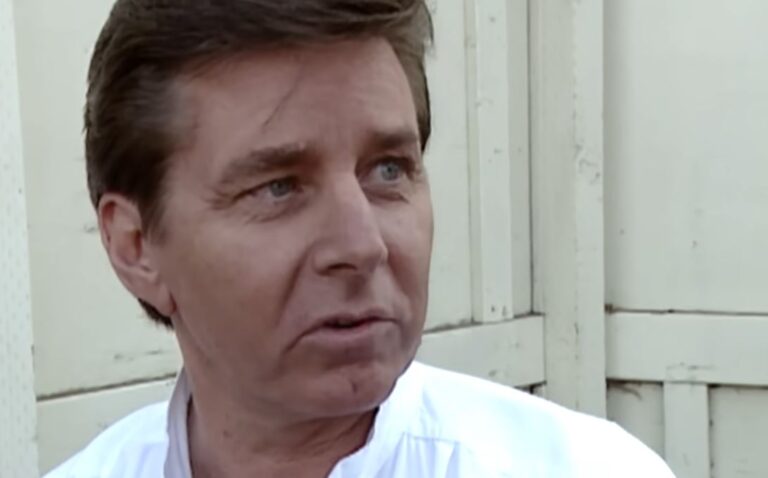Fans have recently focused on Bobby Sherman’s financial legacy as they consider his death at the age of 81. Sherman’s net worth, which was estimated to be between $8 and $10 million in mid-2025, remained remarkably stable, in contrast to many celebrities whose fortunes diminish with their fame. Even though that number is significant, it only suggests a bigger picture—one that connects service, stardom, and profound personal reinvention.
Bobby Sherman first gained notoriety as a heartthrob in the late 1960s, appearing on the covers of almost all of the teen magazines of the time. His cheerful smile and friendly manner made him look like the boy next door, but with a record deal. He played Jeremy Bolt, the shy younger brother who frequently sang on screen, in the family-friendly ABC series Here Come the Brides, which gave him his big break. Music sales skyrocketed as a result of the publicity, with “Little Woman” becoming a hit song and reaching No. 3 on the Billboard charts.
Bobby Sherman – Personal and Professional Overview
| Full Name | Robert Cabot Sherman Jr. |
|---|---|
| Born | July 22, 1943, Santa Monica, CA |
| Died | June 24, 2025, Los Angeles, CA |
| Occupation | Singer, Actor, EMT, Reserve Officer |
| Years Active | 1962–2001 |
| Major Hits | “Little Woman,” “Julie, Do Ya Love Me” |
| Spouse(s) | Patti Carnel (div.), Brigitte Poublon |
| Children | 2 sons |
| Net Worth at Death | Estimated $8–10 million |
| Charity Work | Co-founder, BBSC Foundation |
| Notable Shows | Here Come the Brides, Getting Together |
He had sold over five million records by 1971, including five gold albums and seven gold singles. At a time when competition was especially fierce, these achievements solidified his place in the music industry’s elite. Sherman was on par with David Cassidy, Donny Osmond, and even The Monkees in terms of popularity during the 1970s. Sherman, however, took a surprising turn while others held onto their waning youth icon personas.
By the middle of the 1970s, Sherman made the decision to become an EMT after experiencing a personal crisis involving one of his sons. Unexpected at the time, this choice turned out to be courageous and profoundly significant. He started volunteering with the LAPD, teaching recruits CPR and basic first aid in exchange for applause for ambulance sirens. He eventually joined the San Bernardino County Sheriff’s Department as a reserve officer, which is an unusual change for someone who used to perform in front of thousands of yelling fans.
Sherman’s recognition as the LAPD Reserve Officer of the Year in the late 1990s demonstrated how seriously he took this second career. He worked quietly and steadily for more than ten years, imparting his knowledge to cadets and assisting the department in becoming more responsive and highly effective in its emergency preparedness. New officers credited Sherman with indirectly saving lives through education alone, citing his notable improvement as a result of his training.
He never completely left his roots, though. He went on nostalgia tours with Davy Jones and Peter Noone in the late 1990s. Even though Sherman was moving into more subdued, service-oriented roles, these appearances gave devoted fans a chance to re-connect with their favorite star. His public performances came to an end with his final solo concert in 2001, but his influence persisted.
Sherman’s portfolio benefited monetarily from exceptionally wise decisions. Instead of wasting money on ephemeral pleasures, he spent $65,000 in 1971 on a house in Encino, which is now estimated to be worth $2 million. It evolved from a house into a haven where he famously constructed a handcrafted, 1/5 scale model of Main Street at Disneyland. Despite its whimsical appearance, that project reveals a man who valued both creativity and nostalgia equally.
Over the years, royalties from previous record sales kept coming in, and Sherman’s prudent management of his intellectual property guaranteed steady revenue. Additionally, his estate maintained revenue even after he left the public eye by strategically using his brand and occasionally licensing it. By doing this, he made sure his $8 million fortune held steady even when he wasn’t in the news.
The Brigitte & Bobby Sherman Children’s Foundation, which he co-founded with his wife Brigitte Poublon, was one of his most inventive ventures. The foundation, which has its headquarters in Ghana, gives kids access to high-quality nutrition and education. Sherman’s legacy went well beyond emergency services or even entertainment with this work. The foundation serves as a reminder that charitable giving need not be conspicuous; rather, it should be genuine and long-lasting.
Sherman’s career and wealth also provide a more comprehensive look at the changing nature of celebrity. He changed; he didn’t disappear. Sherman purposefully changed the course of his life, whereas many teen idols of his time suffered emotionally or financially as their fan base grew older. His story is remarkably similar to that of Paul Petersen, who became an advocate for child actors, or Rick Springfield, who combined music and therapy. Like Sherman, these individuals managed to create a second act that was both incredibly fulfilling and incredibly human.
Sherman fought valiantly against Stage 4 kidney cancer before passing away in June 2025. Fans of all ages paid tribute after his wife, Brigitte, quietly and dignifiedly broke the news. Public personalities such as John Stamos and Donny Osmond paid tribute to him as a mentor, friend, and philanthropist in addition to being a pop icon.

